6 Spring Design Trends from Lyndhurst Mansion’s Flower Show
By Jill Brooke
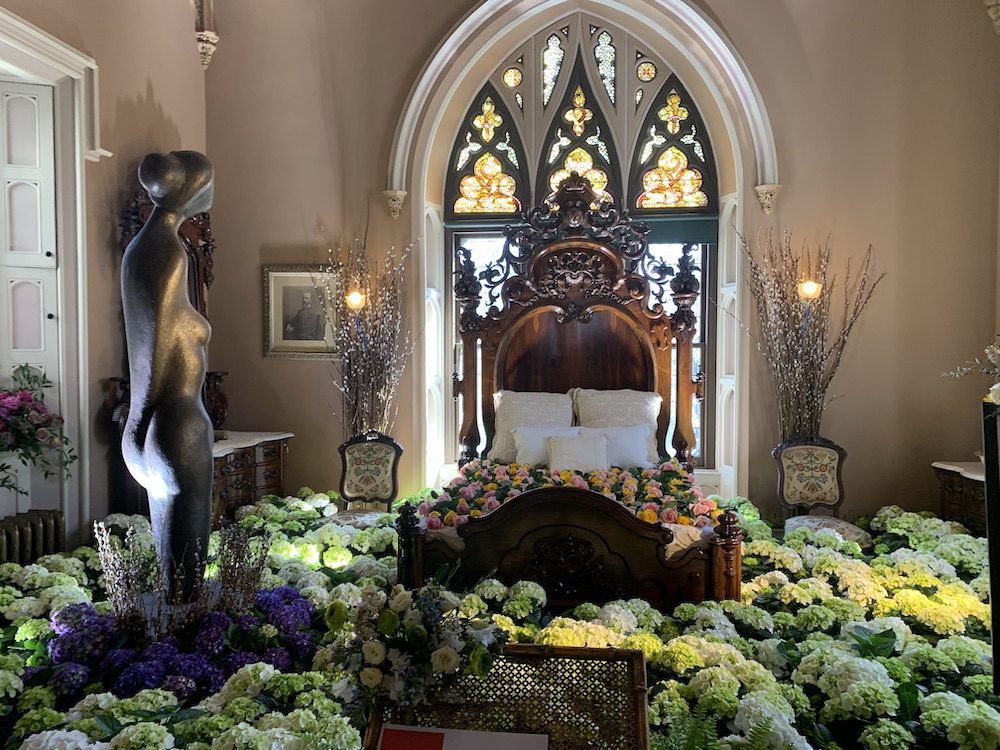
Fans of HBO’s “The Gilded Age” were delighted with the results of visiting Tarrytown’s Lyndhurst Mansion’s annual flower show.
6 big design trends were revealed at the show which takes place at the estate of railroad tycoon Jay Gould who was featured in the popular series as George Russell. Gould purchased the estate in 1880.
Overlooking the Hudson River in Tarrytown, New York, Lyndhurst is one of America’s finest Gothic Revival mansions. Designed in 1838 by Alexander Jackson Davis (1803-1892), the mansion’s architectural brilliance is complemented by its comprehensive collection of original decorative arts and the estate’s park-like landscape.
Six Flower Trends from Lynhurst Mansion’s Flower Show:
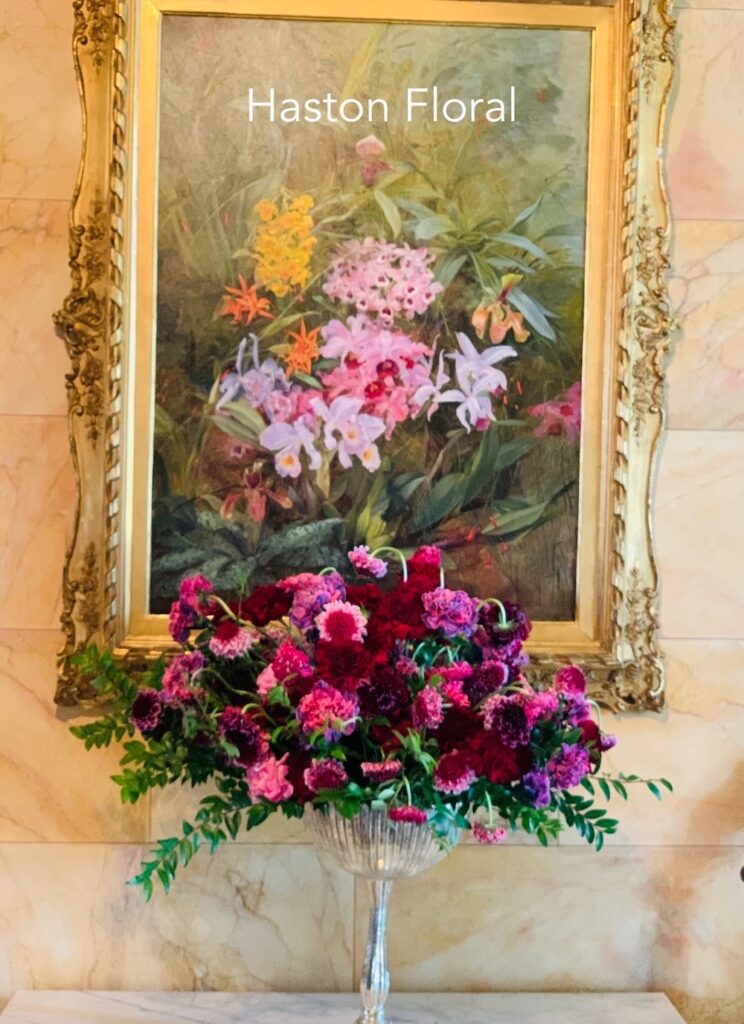
1). Match the flowers with the paintings
Haston Floral did a wonderful job of coordinating modern two-toned raspberry scabiosa with this painting. And since scabies is fragile and droops quickly, the team wisely introduced similar colored carnations which will last – and even hold up the scabiosa. Haston also showed how simple wax flowers with pokes of higher branches can be intriguing when put in stone-colored vases.
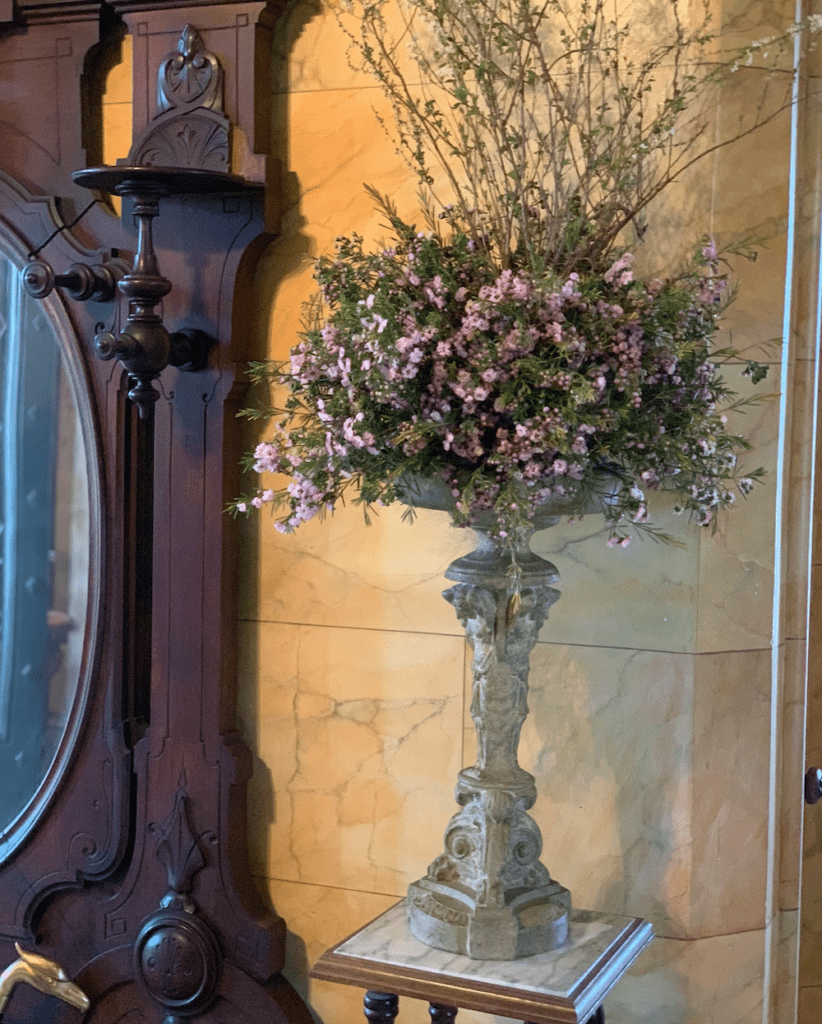
These are also long-lasting and feel wild and wonderful. I also loved the green and yellow ranunculus that they matched with greenery on the urn. Fun. Furthermore, many floral artists are now matching floral designs with paintings that really make a room. In the photo above, notice how Ned Kelly surrounded a sculpture looking through the window and towards the bed with hydrangeas. Yes, he carpeted the floor with hydrangeas and made a blanket of yellow and pink roses to match the antique stained windows, but his idea of bringing the outside inside is one we should all remember and possibly do.

2) Use Your Greens
With a name like Mossy Fern, not a surprise that this team creates earthy beautiful floral designs. In fact, they took bare nobby rose branches – even with thorns – and layered them on moss to great effects. Then they foraged items – which is so on trend with eco-friendly practices – for added pop. Collectively these details created the feeling of being in an enchanted garden. In fact, they also lined glass vases with a variety of big bold leaves – such as striped Calathea Makoyana leaves and blue star fern leaves – that added intrigue and depth to the designs. The advantage of this strategy is that you don’t have to have as many delicate costly flowers to create a winning result. Among their talent, they also create terrariums and have found a way to have them lit inside for added ambiance. Among the flowers used were protea cynaroides, scabiosa, French parrot tulips, Helleborus, Gloriosa Lillies, Calla Lillies, and Eryngium.
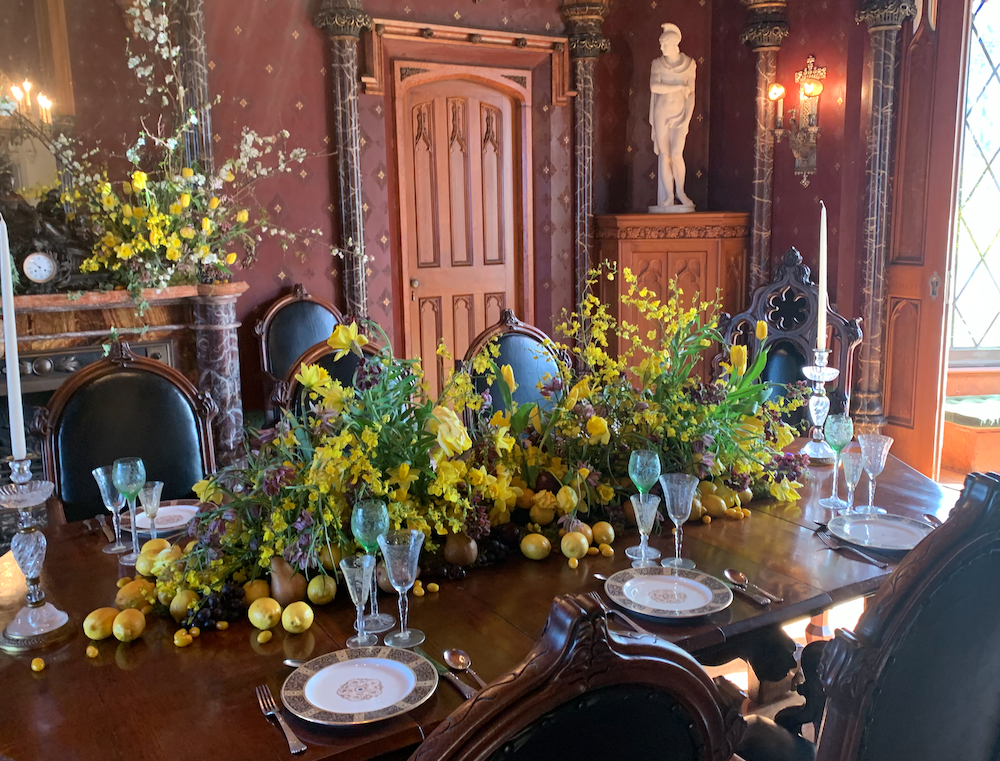
3). Mix Fruits, Veggies, and Flowers in the Same Color Pattern
Penny Karvounis made this dark wood table feel like a burst of spring using bright yellow forsythia along with lush Dutch tulips and friendly daffodils draped over the table. But what really made people smile was how this team used lemons and yellow tomatoes to accent the design. Little hints of lavender flowers and curling branches added the accessories needed for an overall wow effect. She also used forsythia branches on mantles and in a large urn. Simple can be wonderful.
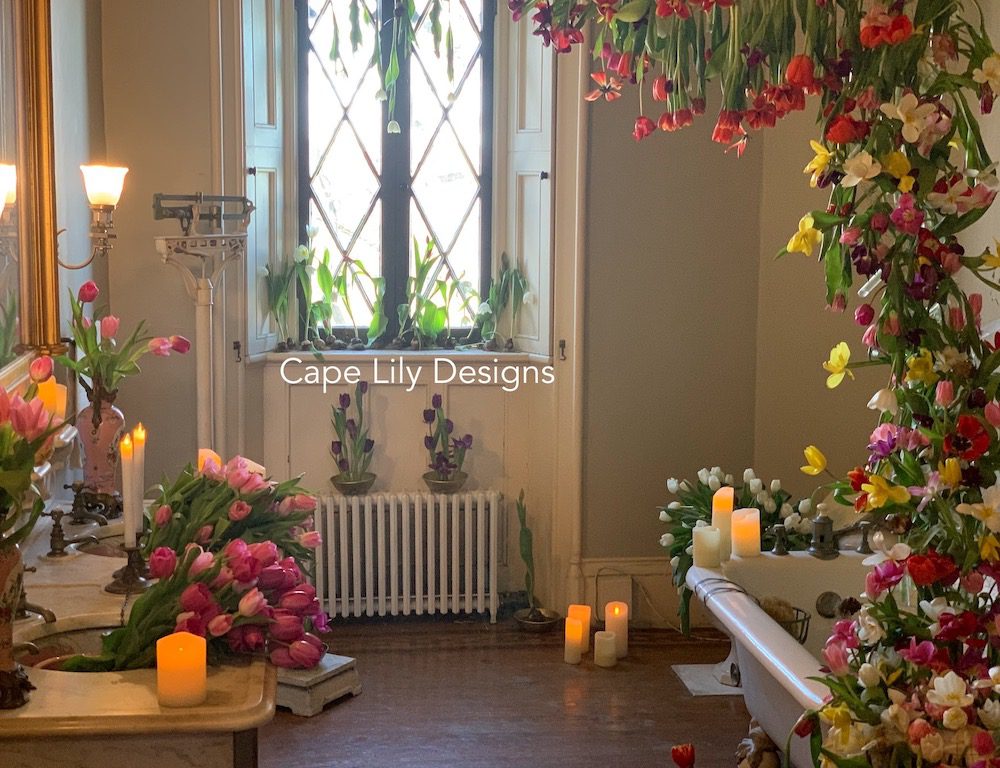
4). Since Tulips Droop – Let them
Cape Lily Florals literally had pink tulips hanging from the ceiling or shower curtain rod along with glorious spidery lilies. Sylvia then wrapped a rod with florals so it feels like you were in a flower waterfall. Now of course you may not stuff the sink or toilet with tulips which did add a lot of styles – especially. If guests are over – but it was clever. And notice how she used bowls with tulips on the radiator. Radiators can often be an eyesore or bland. Not with tulips like these.
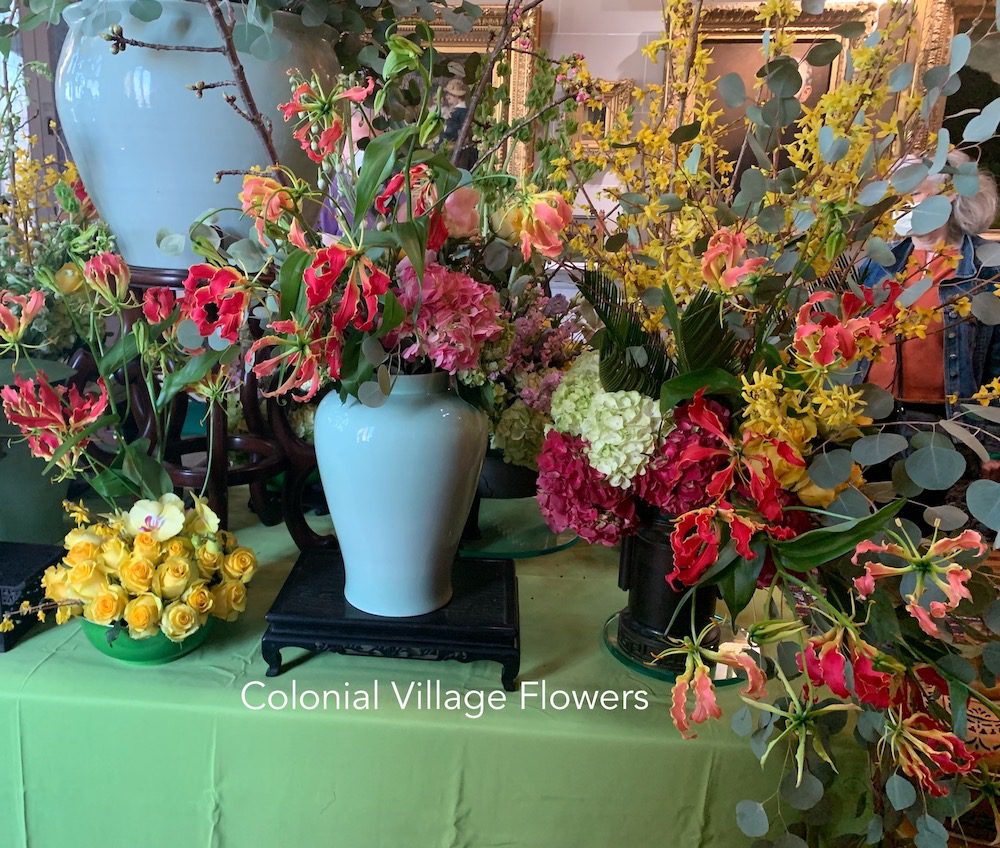
5) Gloriosa Lillies Continue to be Super Popular
Colonial Village Florists were like mad scientists using this mahogany table like a floral laboratory. Because of the bright orange and yellow stripe on gloriosa lilies as well as the spidery shape, this flower is just a terrific floral accessory to the more showy and demanding roses and tulips.
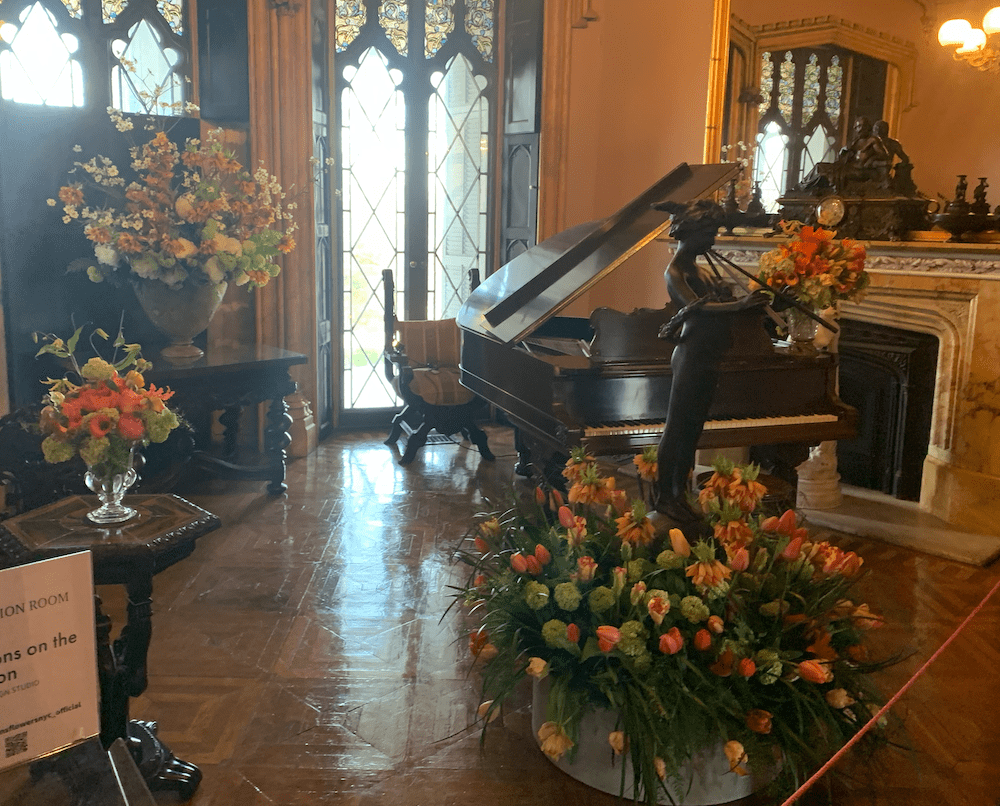
Seasons on the Hudson also used this fab flower with their extraordinary tulip displays in the main drawing-room. Definitely the accessory of the spring. Aren’t these arrangements just so happy and lush?
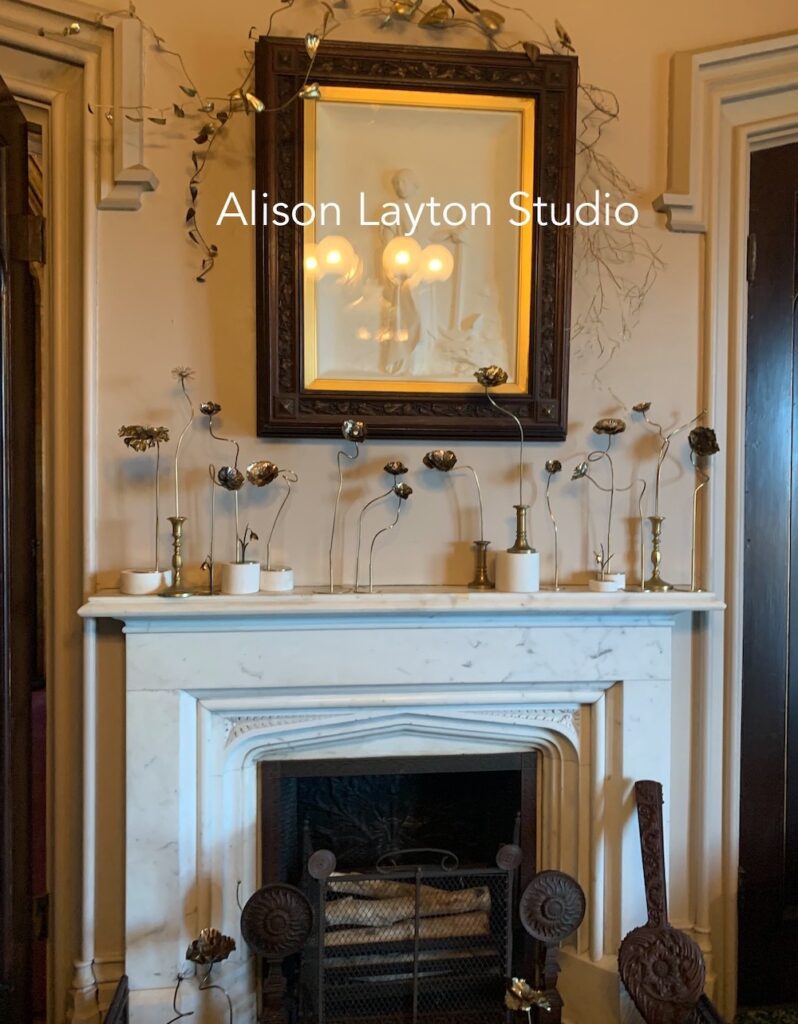
6). Faux Flowers Can Be Fab
It is always a challenge to modernize a very classic design. In the show were two artists who were able to use both paper florals and sculpted flowers to make an impact.
Alison Layton’s metal sculptures are definitely something to collect and their botanical designs do delight. They have, well, a wiry feel which is perfect for the materials used. They grow in unexpected ways and can be twisted to accommodate not only a mantle but even around plaster sculptures.
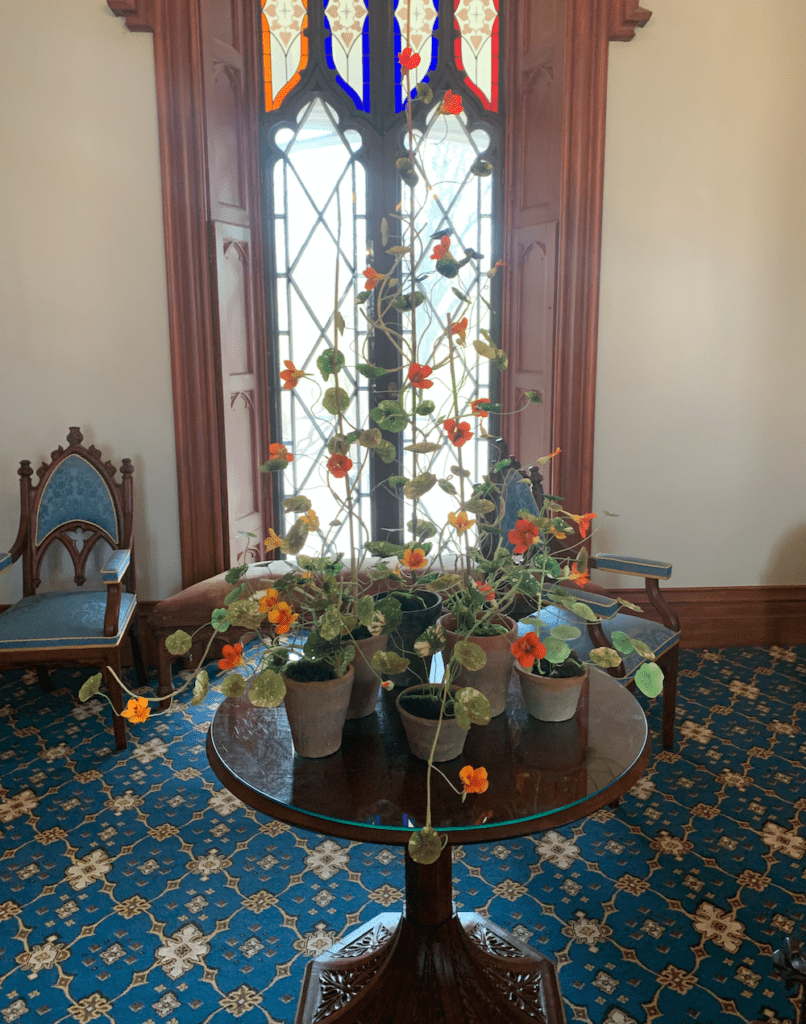
Many were also enamored with Sourabh Gupta Designs who creatively made pots of paper flowers that from a distance were indistinguishable from live flowers. Sometimes art is a conversation piece and we applaud any efforts that help create conversations about flowers.
The show not only raised funds for the Lyndhurst Museum but continues to attract crowds from far and near – especially since HBO’s “The Gilded Age” is educating the public on the beauty of the Gothic design. And yes, the series has been renewed for a second season.

Jill Brooke is a former CNN correspondent, Post columnist and editor-in-chief of Avenue and Travel Savvy magazine. She is an author and the editorial director of FPD, floral editor for Aspire Design and Home magazine and contributor to Florists Review magazine.
